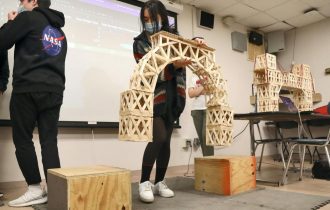Incorporating STEM Education in Early Childhood Classrooms: Planting the Seeds of Innovation

Hey there, fellow educators and lifelong learners! Today, we’re going to deep-dive into a topic that’s close to my heart: incorporating Science, Technology, Engineering, and Mathematics (STEM) education in early childhood classrooms. Albert Einstein once said, “The important thing is not to stop questioning. Curiosity has its own reason for existence.” The seeds of this very curiosity, a cornerstone of STEM learning, are best sown in the fertile minds of young children. So, let’s explore the why, the how, and the benefits of integrating STEM in early education.
The Importance of STEM Education in Early Childhood
STEM education has become increasingly crucial in today’s technology-driven world. It encourages critical thinking, problem-solving, and creativity – skills that are vital in the 21st-century job market. But why should we focus on it in early childhood?
Young children are natural explorers. They learn through touch, sight, and experience. This innate curiosity aligns perfectly with the hands-on, inquiry-based nature of STEM education. Integrating STEM into early childhood education lays the foundation for a lifelong love of learning and prepares children for a future filled with technological advancements.
Emerging educational technologies have made it easier than ever to introduce STEM concepts to young learners. For example, programmable robots like Fisher-Price’s Code-a-pillar or LEGO’s Duplo Coding Express can help children grasp the basics of coding and sequencing in an engaging and interactive manner.
Practical Strategies for Incorporating STEM in Early Childhood Classrooms
Successfully incorporating STEM education in early childhood classrooms requires thoughtful planning and execution. Here are a few practical strategies:
Integrating STEM into Everyday Activities: Everyday classroom activities provide numerous opportunities to introduce STEM concepts. For instance, during playtime, children can learn about physics (force, balance) by stacking blocks, or understand patterns and numbers by sorting toys.
Utilizing Technology: Edtech tools can be instrumental in teaching STEM concepts. Educational apps like Tynker introduce kids to coding via interactive games and puzzles, and platforms like Prodigy make math learning fun through a fantasy-style game.
Creating a STEM-friendly Environment: A classroom that encourages curiosity, exploration, and experimentation can stimulate STEM learning. An “Investigation Station” equipped with magnifying glasses, measuring tools, or simple machines can provide children a space to explore STEM concepts freely.
Involving Parents: Parents can play a crucial role in reinforcing STEM learning. Educators can share STEM activity ideas for parents to do at home or organize family STEM nights at school to engage parents in their child’s learning process.
Take the example of a pre-school teacher using the children’s interest in a butterfly seen in the school garden. She introduces a caterpillar in the classroom, facilitating observations and discussions about the life cycle, a fundamental biological concept.
The Benefits of STEM Education in Early Childhood
Introducing STEM education early has several long-term benefits:
Promoting Cognitive Development: STEM activities stimulate brain development and foster critical thinking and problem-solving skills. Children learn to observe, hypothesize, experiment, and reach conclusions.
Cultivating Creativity and Curiosity: STEM learning encourages children to think creatively, ask questions, and seek answers, fostering a love for learning.
Preparing for Future Success: Early exposure to STEM sets children up for academic success. It also prepares them for future careers, many of which will be STEM-related, given the rapidly evolving tech landscape.
Consider a simple classroom activity where children are encouraged to build a tower using marshmallows and spaghetti. This seemingly simple task fosters creativity, critical thinking, and even introduces basic concepts of engineering and physics. The pride in their creation instills confidence, promoting a positive attitude towards learning and problem-solving.
In conclusion, integrating STEM education in early childhood classrooms is a potent tool to foster curiosity, creativity, and critical thinking. By leveraging technology and engaging strategies, educators can plant the seeds of a love for STEM in young minds. As the renowned educator Sir Ken Robinson said, “Curiosity is the engine of achievement.” By sparking this engine early, we can set our children up for a journey of lifelong learning and achievement. Let’s make every classroom a launchpad for young explorers, ready to navigate the exciting world of STEM!


